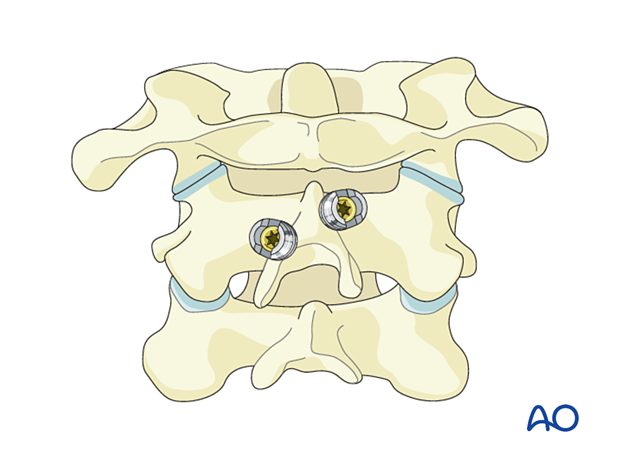C2 laminar screw insertion
1. Introduction
Laminar screws in C2 may be used in the management of trauma, tumors, and degenerative conditions in the cervical spine.
Wright described this technique which has the advantage of being relatively easy.

2. Screw entry point
To be able to place bilateral laminar screws, one must plan the starting holes such that both screws are feasible. One side must be as cranial as possible, while the other side must be as caudal as possible to allow for both screws.
Place a small burr hole as the starting point for the laminar screws.

3. Screw trajectory
Use a pedicle probe directed as dorsally as possible to avoid intrusion into the spinal canal.

4. Screw insertion
Tap, measure the length, and insert polyaxial screws. Often screw lengths of 25–35 mm are possible. A screw that perforates the dorsal cortex of the lamina is perfectly acceptable and may, in fact, be desirable in cases of severe osteoporosis.














